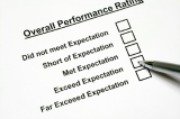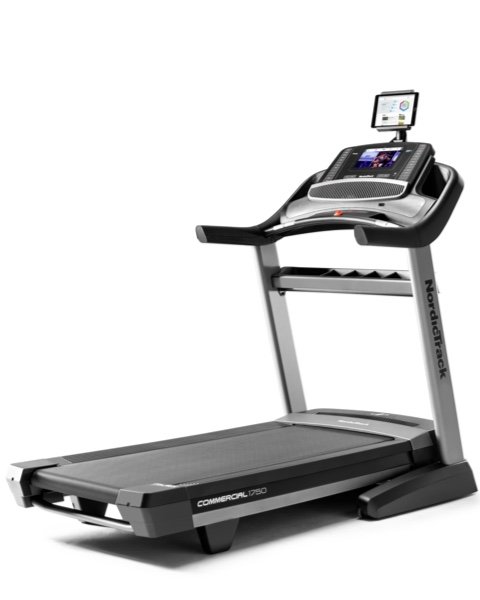Treadmill Cushioning Explained
Unless you are super skinny and don’t have excess fat, you need treadmill cushioning to help dissipate some of the crushing force your body is sending to your joints and spine with every step.
When your foot steps down on a treadmill’s deck, it creates an impact force on the deck that is more than twice your body weight. This energy is then transmitted back up your leg – unless a shock absorption system is present to dissipate some of that force. A treadmill cushioning system lessens this shock substantially allowing you to work out longer and feel less fatigue in your legs and body.
Unfortunately, this technology is too expensive to use on all machines. Some cheap treadmills use springs, a design which makes the walk feel “springy.” This actually makes the jarring impact worse since it amplifies the energy back up through your body.
The proper deck suspension system, on the other hand, will be firm but have just enough give; the best cushioning system will absorb as much as 42% of your foot strike energy.
How Cushioning Works
A treadmill’s running surface consists of a multi-ply belt running over a ¾" or a 1" thick solid wood deck. The deck is mounted on elastomer rubber grommets on top of the steel frame. The preferred components for treadmill cushioning are called variable durometer elastomers.
The best design is variable cushioning, found on many of the best treadmills for running. They have three key areas: the front of the deck is the stride impact zone where the softer rubber is located for maximum cushioning and absorption. This is where your foot lands. At the back of the treadmill is the firm push-off zone (for your rear foot) and it has more stable cushioning made with stiff rubber. The middle area is the transition zone, which has moderate cushioning.
A Comparison of Systems
According to a recent study in Runner’s World, which compared leading models for cushioning, the treadmills receiving the highest scores included models made by Landice, Star Trac, and True. Also ranking well were Life Fitness, Precor, Tunturi, and Cybex.
Considering the average price of these elite models (in the $3000 and up range), it is a given that they would feature advanced treadmill cushioning technology. But what about the mid-priced residential models that you are in the market for? We looked at a variety of treadmill brands and their deck absorption systems to see how they compare.
The Brands and Their Cushioning
Landice is one of the elite treadmill manufacturers in the world and doesn’t cut corners when it comes to their Variable Flex Cushioning, which is used in their rehab and commercial machines as well as residential models. The “softer-than-grass” VFX system allows the deck to move only in a vertical plane, and not side-to-side or backwards, for an optimum response in the strike, thrust, and kick zones. A user can run anywhere on the treadmill belt for maximum shock absorption and comfort. Along with the shock absorbers, the “floating” running deck on a Landice treadmill is 1" thick, which rates as 237% stronger than any treadmill with a ¾" deck.
NordicTrack by Icon Fitness uses ComfortShock™ Cushioning on cheaper models and DuraStride™ Adjustable Cushioning in its better treadmills. The latter system uses a moveable isolator so you can change the feel from a firm to soft workout in the most important zones. The adjustable treadmill cushioning reduces the impact on the body by 15% to 33% as compared to running on asphalt. Newer options include the adjustable FlexSelect cushioning and the advanced Reflex Cushioning technology.
HealthRider by Icon Fitness uses the SoftTrack™ Cushioning system, which reduces impact on the joints up to 15% as compared to road running.
ProForm (also an Icon Fitness brand) uses a ProShox Adjustable Cushioning System on its more advanced models. You can change the cushioning to suit your preference; it reduces impact by up to 33%. Other treadmill cushioning systems include ProSoft Cushioning (reduces impact up to 22%), and the ProStride Impact-Reducing Cushioning (20% impact reduction).
Precor uses its patented Ground Effects® Impact Control, a multi-zone shock absorption system, plus an Integrated Footplant™ technology which registers foot speed and recalibrates belt velocity more than 100 times per second. The minute synchronization between user and machine minimizes fatigue over and above what the shock absorption system is providing.
Smooth Fitness uses a Hydra Adjustable Suspension System on its high-end treadmills, which allows you to adjust the absorption to 12 different levels. Smooth uses the Im-Pression Shock Absorption Cushioning System on all of its folding treadmill models. Both of these systems allow for a soft landing for the front foot and firm push-off for the rear foot.
Evo by Smooth Fitness uses the Swing Arm™ Cushioning System, which reacts directly to the weight of the user to provide additional treadmill cushioning. This suspension technology helps your muscles contract at lower peak intensity for a longer period of time, which helps to burn 14 to 23% more calories.
Sole (now owned by Dyaco International) designed their Cushion Flex Deck in 1992 and it is still recognized as one of the best cushioning systems in the industry. Studies have shown that the Cushion Flex Suspension System reduces impact on feet, ankles, knees, and spine by 40% compared to running on asphalt. Cushion Flex is a controlled low impact design with the treadmill deck, all-steel frame, and incline system working together.
Spirit is one of the lesser-known treadmill brands but you should know that they are made by Dyaco. They have taken older Sole models and repackaged them under the Esprit brand name, so you get the same great cushioning as if it were a Sole model (which it really is).
Yowza was launched by former Smooth engineers and also uses the patented Swing Arm™ shock absorption to minimize impact on your body. This superior treadmill cushioning system also uses a floating deck, which rests on 10 multi-durometer elastomer rings.
In addition to buying a quality machine with an excellent treadmill cushioning system, you’ll get better results if you always run or walk in comfortable shoes. A treadmill is the ideal fitness tool for people of all shapes and sizes, and thanks to the softer landing surface of the deck, you’ll be able to workout longer, smarter, healthier, and in better comfort.
Treadmill Comparison and Rating Guide
UPDATE: Early Black Friday Treadmill Sales are on!
SEE THE BEST CURRENT DEALS HERE
Best By Price
Cheap
Under $500
$500-$1000
$1000-$2000
$2000-$3000
$3000-$4000+
Best By Type
Best Overall
Best For Walkers
Best For Runners
Best Incline
Best Folding
Best Manual
Consumer Reviews

Rave or rant about the treadmill you bought or used at the fitness center. Read reviews submitted by others.

